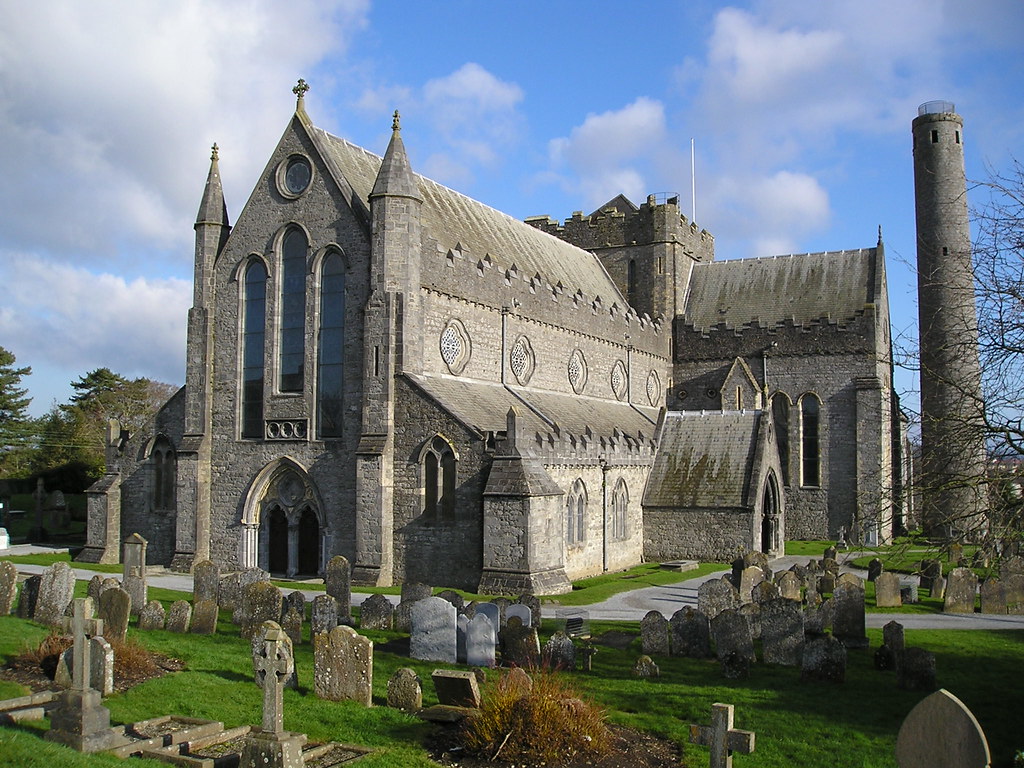
Canice's cathedral and round tower (which is a remnant of an earlier monastery and proto-urban community.)
| |
| |
| |
 |
| Canice's cathedral and round tower (which is a remnant of an earlier monastery and proto-urban community.) |
Saint Canice's Cathedral is a structure from the early Anglo-Norman period of Kilkenny, built upon the site of a monastic settlement.
Monastic settlements were the closest approximation to urban centers in Ireland before the Viking cities of the 10th century. The walled monastery on the site where Canice's Cathedral now stands was therefore an important establishment long before the arrival of the Normans. The round-tower on site is the only visible, above-ground remnant.
The political-economic importance of Kilkenny grew after the arrival of Anglo-Normans in 1169. Their town here soon acceded to ecclesiastical power within the diocese of Ossory* Sources tell various tales. It seems that the Normans, expelled after their original incursion, had returned in about A.D. 1190 with enough force to take and hold the riverside hill upon which they would build their castle.
Saint Canice's has been renovated on several occasions. In the witchcraft case of 1324, Alice Kyteler's son William Outlawe was deemed complicit in her sins, and the church-government imposed a pennance. Among other requirements, he was to re-surface the roof of the cathedral with sheets of lead. The roof collapsed. In 1332 the first major renovation began. In 1650 the English military-and-political leader Oliver Cromwell captured the cathedral and used it for stabling his horses. The cathedral required another major renovation after the expulsion of Cromwell's forces.
In 1871 the Church of Ireland was disestablished, meaning that this minority congregation (associated with the Anglican [British] church) was no longer due its obligatory tithing from the Irish citizenry. Since then, Saint Canice's Cathedral has been under state care as a national monument.
| |
* A diocese, in Catholicism, is the administrative territory supervised by a bishop. Ossory was, and is, upon the territory of an ancient kingdom by the same name.
↑ Return to "within the diocese of Ossory" ...
| |
| |